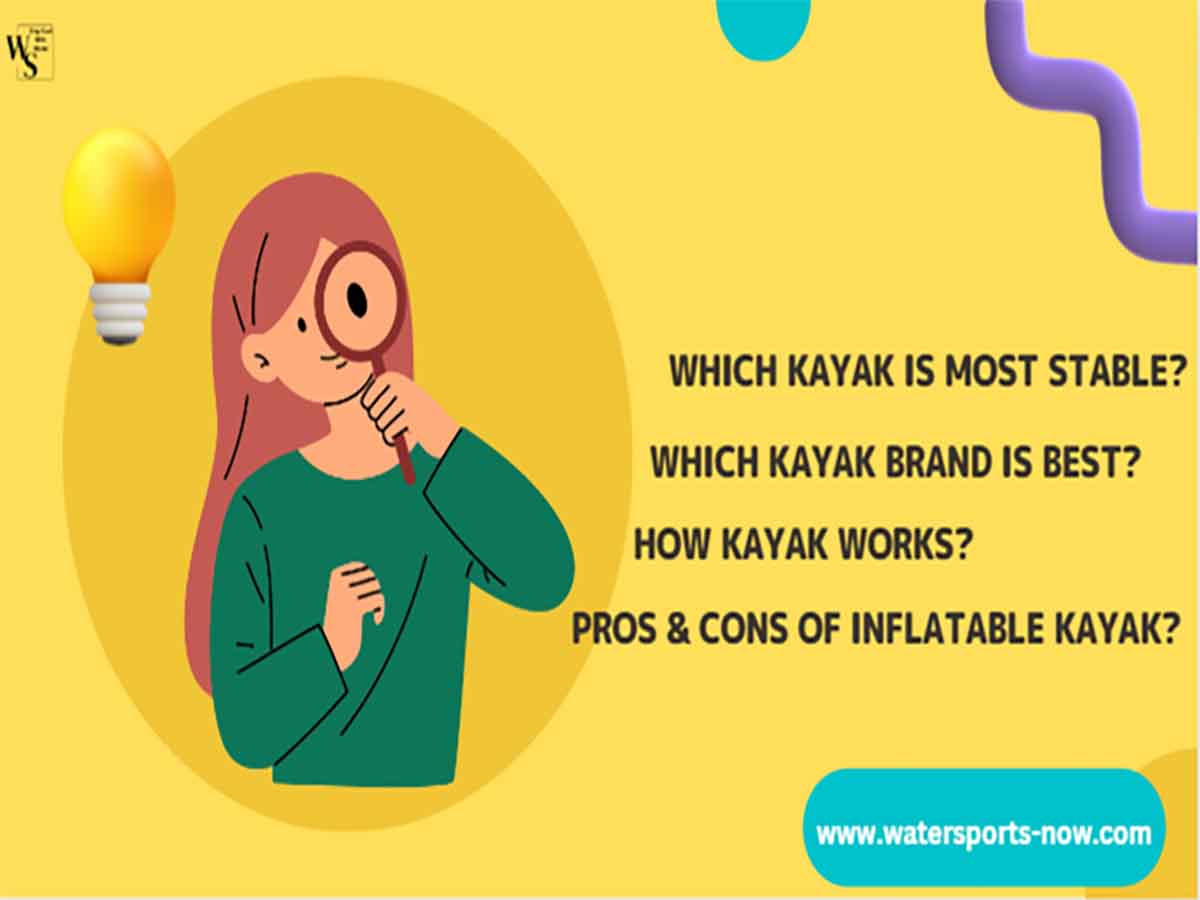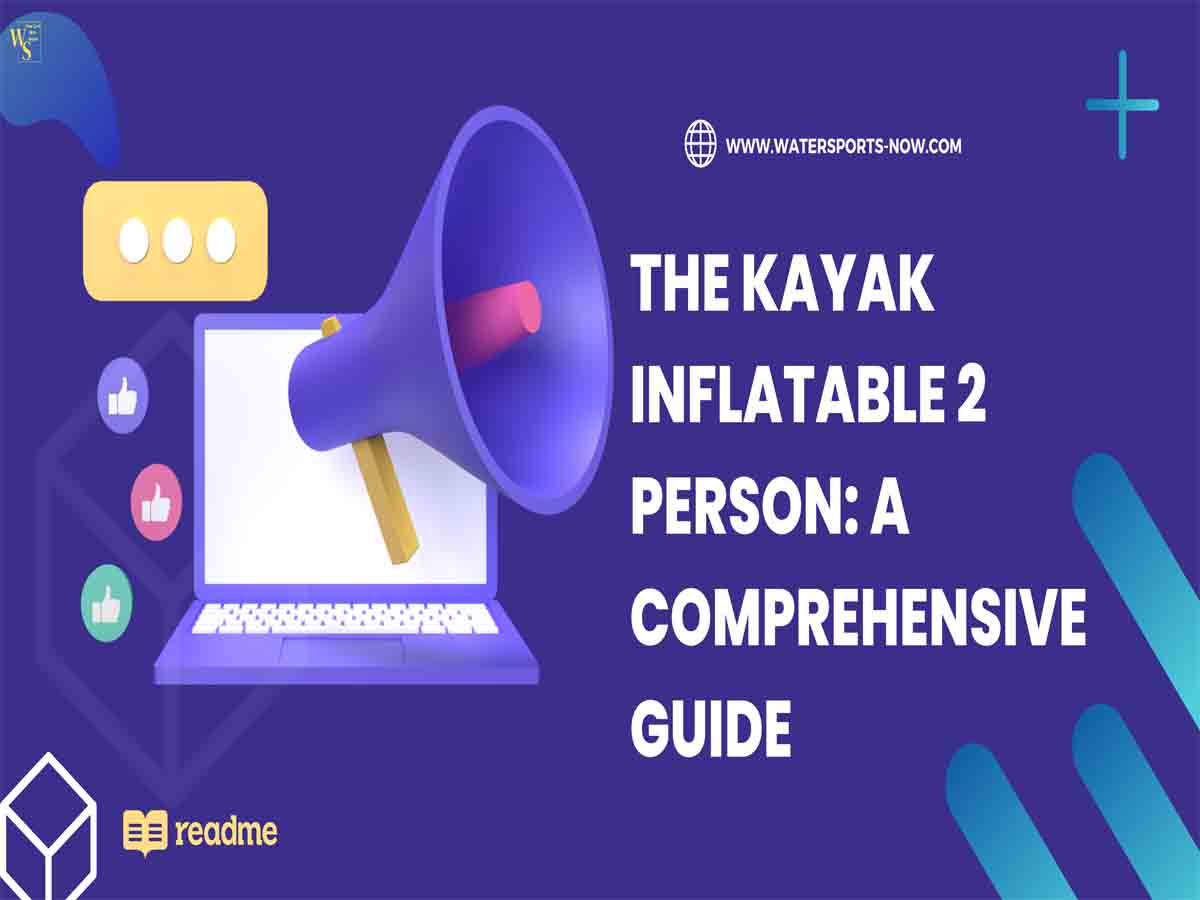The kayak inflatable 2 person kayak and is perfect for both beginners and experts alike. A kayak is a small, narrow watercraft that is propelled by means of a double-bladed paddle. The word “kayak” originates from the Greenlandic language, where it is the word for a hunting boat.
Kayak Inflatable 2 person kayaks are designed for use on rivers, lakes, and calm coastal waters. They are constructed of a tough PVC fabric and have multiple air chambers, which makes them virtually unsinkable. Inflatable kayaks are easy to transport and store, and they offer a great alternative to traditional hard-shell kayaks.
This blog will provide you with everything you need to know about inflatable 2-person kayaks, including their benefits and drawbacks, so that you can decide if they are the right option for you.
Which Kayak is Most Stable?
When choosing a kayak, one of the most important factors to consider is stability. Different kayaks have different levels of stability, which can be affected by a variety of factors, such as the kayak’s width, length, and weight capacity.
In general, wider and longer kayaks are more stable than shorter and narrower ones. However, this is not always the case, as some shorter and narrower kayaks are designed for more experienced kayakers who are looking for a challenge.
When choosing a kayak, it is important to consider your own level of experience and strength, as well as the conditions in which you will be using the kayak. If you are a beginner, it is best to choose a wider and longer kayak for more stability. Keep reading to learn more about which kayak is most stable!
Stabilize
The first thing many people ask me about a kayak is how stable it is. That’s right because stability is one of the most important qualities a kayak should have. If it’s not stable, you certainly won’t enjoy fishing on it because you’re always afraid of it tipping over. Look for a wider kayak as it will make it more stable.
The Seat
Kayak fishing is a lot of fun and you will probably spend a lot of time doing it. Since you will be sitting most of the time, you will need a kayak with a comfortable seat. When it comes to sitting, there are basically two options. These either sit on top or inside. As the name suggests, the seats are either on the top of the kayak or inside. In any case, choose a soft and well-padded seat.
Where Would You Fishing
If you plan to fish in choppy water, avoid buying a lightweight kayak as it won’t serve you well. If you’re fishing in a swamp or small lake, a small, light kayak will do. The location of the fishing spot is also important because if it’s far away, you’ll need to transport the kayak by car, so you should buy a kayak that can be transported.
Available Storage Space
For this type of kayak, you need some space to accommodate all your gear and the fish you catch. Make sure all your belongings are in the kayak or you may be forced to leave something you absolutely don’t like.
Drive System
Choose your most comfortable drive system and make your fishing fun. If you don’t want to row, you can opt for pedals, paddles, or even an electric kayak. Paddles are the most popular and cheapest, giving you a true kayaking experience.
The Kayak Inflatable 2 Person
How Kayak Work?
Kayaks are a type of boat that can hold one or two people. The first use of a kayak dates back to the early 1800s in the U.S. However, the modern kayak evolved from the indigenous dugout canoe. Today, kayaks are popular for a number of reasons, including their versatility, maneuverability, and safety features. Despite these benefits, some people believe that kayaks are not as efficient as other boats for specific uses. While many people love the versatility of a kayak, some prefer more traditional designs for faster speeds and greater cargo capacity.
A kayak is a type of boat that can hold one or two people. They have pointed hulls with rounded bottoms and long, slender bodies. The body consists of multiple frames and ribs that connect together at the stern and aft ends of the boat. A kayak’s design includes a pointed hull and a long, slender body. These features make them ideal for shallow waters and can easily navigate around obstacles in rivers and lakes.
Kayaks have been used throughout history for many purposes, including fishing, transportation, and military use. They are easy to transport on land or in the water thanks to their flat bottom design. This makes them an excellent choice for anyone who needs to transport their gear around easily. In addition to being easy to transport, kayaks are also relatively inexpensive; most can be purchased for under $300. This makes them an excellent choice for anyone on a budget who needs a basic boat for their recreational pursuits.
One downside of kayaks is that they are not very fast compared to other boats. A fast ship would be useful if someone planned to go on an excursion or wanted to travel quickly through the water. However, a slow-moving ship would not be very efficient at fishing or retrieving lost objects in the water. Instead, it would be best used for short trips around shallow bodies of water only.
Another negative aspect of kayaks is that they are unstable and require constant attention to avoid capsizing them. This makes them unsuitable for deep-water excursions or long crossings over choppy waters. Instead, they would perform poorly at these tasks due to their inherent instability. In addition, capsizing a kayak increases the risk of injury because it causes the occupants to fall into the water when they hit the deck.
While kayaks can hold a lot of cargo, they cannot carry heavy loads for long periods of time without damage to the hull or body. This makes them inefficient choices for transporting goods since most goods would break after prolonged contact with the hull and frame structure. Instead, most people prefer to use these boats only for recreational purposes like fishing or swimming.
Overall, kayaks provide excellent value as recreational boats due to their versatility, maneuverability, and safety features despite their shortcomings. They are an efficient choice for most uses thanks to their flat bottom design, maneuverability, and safety features despite their shortcomings. However, capsizing causes instability and damage to the hull and frame compared to traditional designs due to their slower speed and heavier loads carried by traditional boats.
Examples of the Best Kayak Brands
What Are The Pros of Inflatable Kayak?
The advantages of inflatable kayaks over conventional kayaks are numerous. They are more affordable, easier to transport, and can be used in a variety of water conditions.
If you are considering buying an inflatable kayak, here are some of the pros that you should keep in mind.
More affordable: Inflatable kayaks are usually more affordable than traditional kayaks. This is because they are made with cheaper materials and do not require as much maintenance.
Easier to transport: Inflatable kayaks are much easier to transport than traditional kayaks. They can be easily deflated and stored in a small space.
More versatile: Inflatable kayaks can be used in various water conditions. They are great for calm waters, but can also be used in rougher conditions.
Inexpensive: On average, inflatable kayaks cost less than hard-shell kayaks. Especially for those who just want to use their kayak for recreational use, the cost of an inflatable boat may be ideal.
Good Performance: Performance may vary depending on the quality of the inflatable kayak you buy. However, most will behave decently, and track well, and some will even be able to hit some high speeds. The performance of these boats is getting better every year, and some are even on par with hard-hulled boats.
Lightweight: The beauty of an inflatable kayak is that it usually doesn’t need to do a lot, but it can carry a lot of weight. Single inflatable kayaks can generally be carried easily by one person and are easier to get on the water than hard shell kayaks
If you are looking for a kayak that is affordable, easy to transport, and versatile, an inflatable kayak is a great option.

What Are The Cons of Inflatable Kayak?
It has to be cleaned more.
Your inflatable kayak needs to be cleaned both before and after usage, just like a hardshell kayak. However, cleaning an inflatable kayak is more difficult.
This occurs as a result of the nature of the materials employed in its construction. Inflatable kayaks feature several creases and folds where mold and mildew can begin to grow if left untreated.
Additionally, it takes a very long time to dry out after use. Before packaging it, you must spread it out in the sunlight. If not, the next time you use the kayak, you’ll have a foul scent on your hands. Especially if you just got back from ocean paddling! It’s not as bad as it seems, though.
- Kayaks constructed of PVC are less expensive than those made of Hypalon fabric. The high price of the fabric itself is the primary cause.
- Hypalon kayaks weigh a little bit more than PVC kayaks.
- Because of their porous outer layer, they are quickly attracted to dirt.
- They do not cross rocks as easily as PVC kayaks do.
- A Hypalon kayak requires hand glue for every component. Because of the labor-intensive production process, they become more expensive.
- It takes a lot of time to fix rips, tears, and other damage to an inflatable Hypalon kayak. This is true since these kayaks need a two-part adhesive to be repaired. Heat and pressure can break down the glue.
- They can be difficult to transport on land, and doing so frequently requires two people.
- Additionally, paddles need to be put together and disassembled before and after expeditions.
- Even though it’s improbable, if you’re not careful, they could pop or tear.
Wind-up
We hope you enjoyed our post on the kayak inflatable 2 person. Kayaking is a wonderful activity for the whole family to enjoy. It is exciting, a bit challenging, and allows you to relax and enjoy the scenery around you. It can be a fun activity for one or with a group to share and enjoy. If you have any further questions, please contact me. Stay safe and stay good
- 8 Best Wake Surfing Boards You Need To Buy This Summer
- Top 12 Surfing Boards for Beginners | Explore Now
- 10 Canoe Covers That Will Keep Your Canoe Safe In Any Weather
- Best Kayak for Beginners Review in 2022
- 6 Best Fishing Kayaks Under 500 Dollars | Review it Here
- Explore 7 Best Kneeboard: Reviews And Buying Guide

